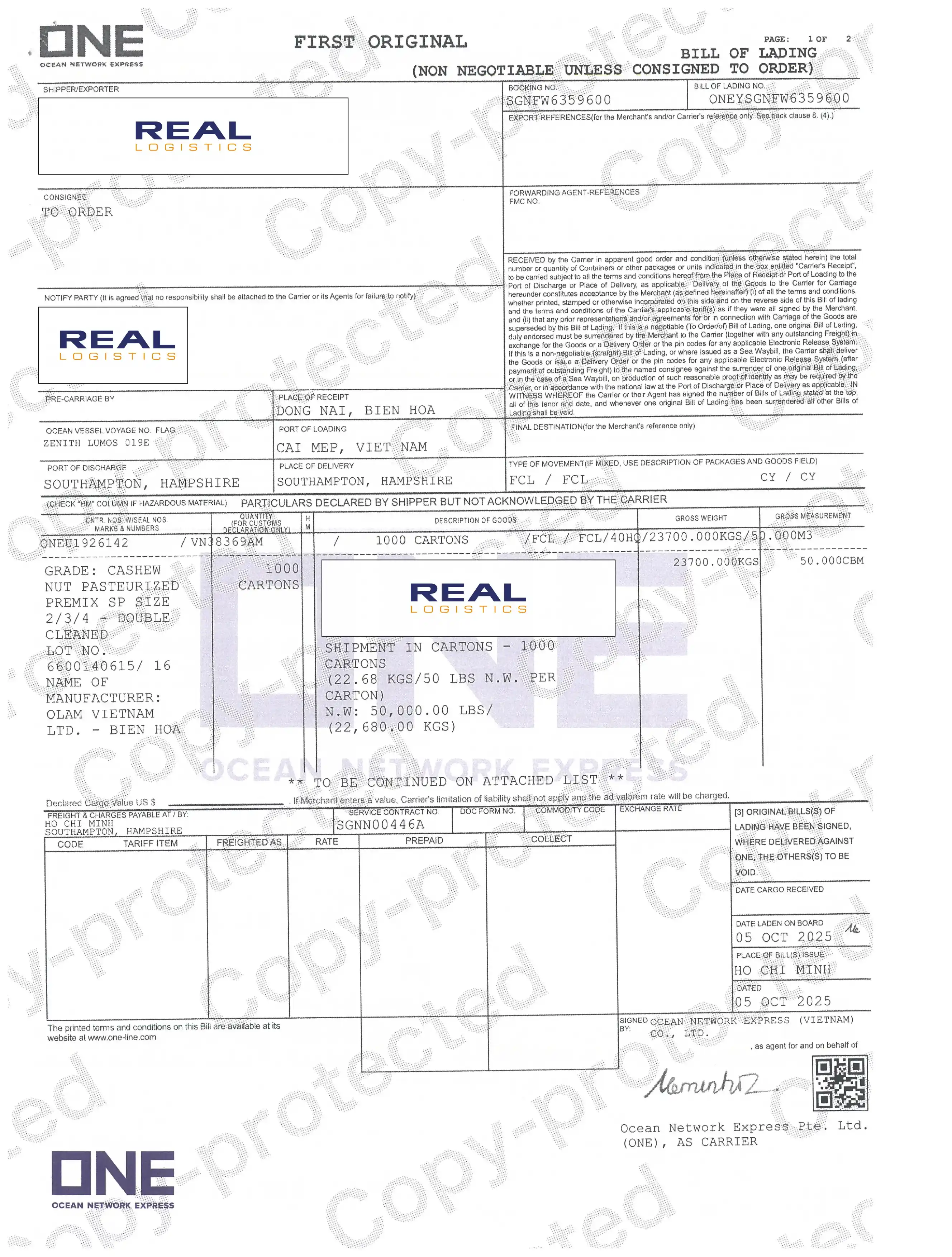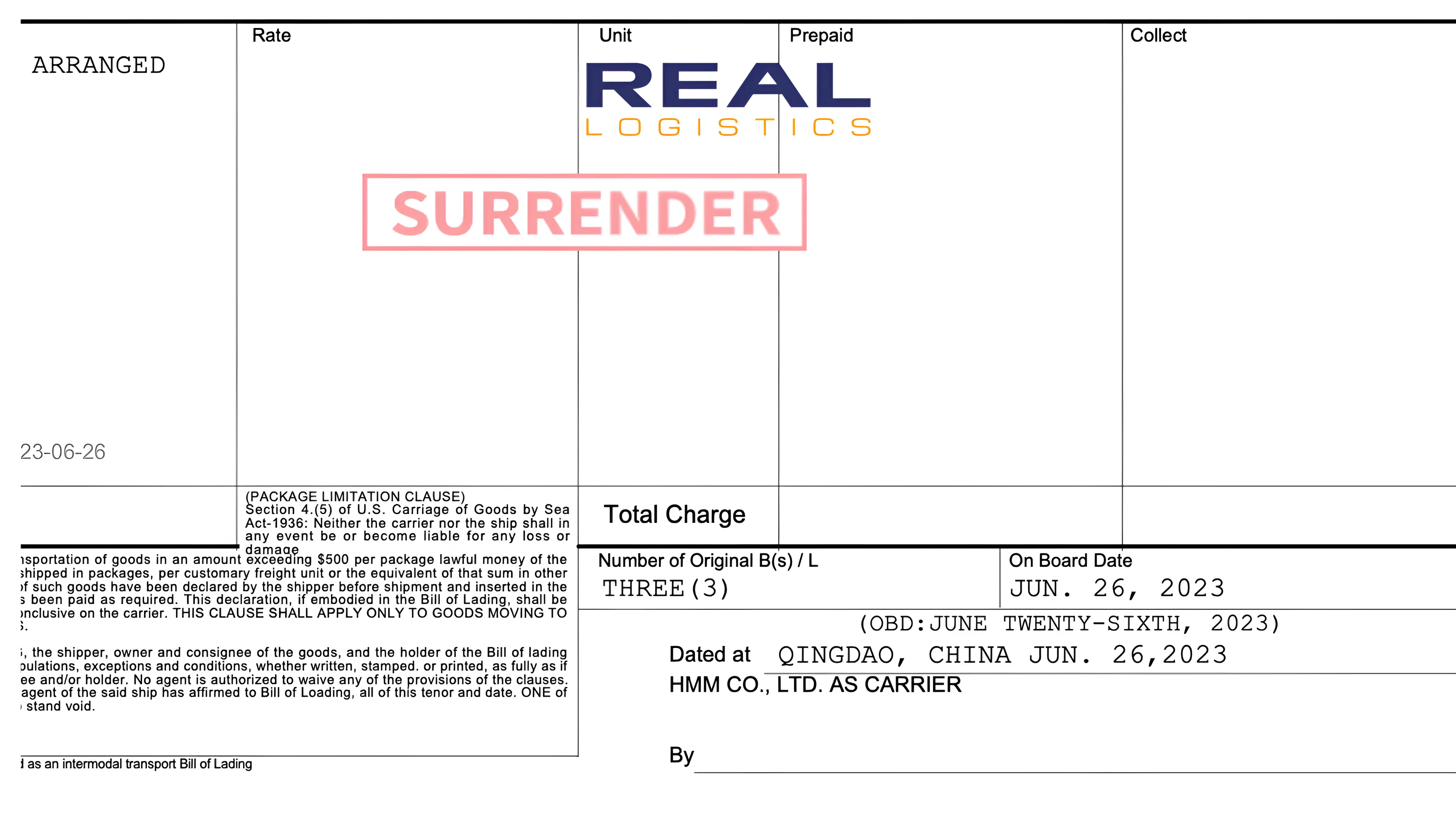4 Essential Types Of Bills Of Lading In Ocean Freight: Original B/L, Telex Release, Surrender B/L, And Seaway Bill
1. Original Bill of Lading (Original B/L)
The Original B/L is the traditional negotiable document that represents ownership of the cargo. Carriers or forwarders issue three original copies and multiple non-negotiable copies. It is widely used, especially in transactions involving high payment risks or those settled through Letters of Credit (L/C).

Advantages:
- Provides maximum control because the consignee must present the original document to receive the goods or obtain a Delivery Order (D/O).
Disadvantages:
- Heavily dependent on courier delivery; delays or document loss may occur.
The Original B/L serves three major legal functions:
- Receipt of goods
- Evidence of the contract of carriage
- Transferable document of title
2. Telex Release – Fast Electronic Cargo Release
A Telex Release is an electronic notification confirming that the Original B/L has been surrendered by the shipper at the port of origin. This enables the consignee to receive the cargo without submitting any paper documents.
Telex Release can be requested at the Shipping Instruction stage, or the shipper may return the Original B/L to convert it into an electronic release.

Advantages:
- Fast cargo release
- No need for physical paper documents
- Reduces the risk of losing the Original B/L
Disadvantages:
- Telex Release Fee applies
- Cargo cannot be re-held after the release is issued
Telex Release is not a new type of B/L - it is simply an electronic release process based on a surrendered Original B/L.
3. Surrendered Bill of Lading (Surrender B/L)
A Surrendered B/L refers to an Original B/L that has been returned to the carrier by the shipper. The document will be stamped “SURRENDERED,” which means the original copy no longer holds legal value.

In essence:
- Surrender = the act of returning the Original B/L
- Telex Release = the electronic message sent to the destination office to release cargo
The two concepts always go together, share identical advantages and disadvantages, and are now processed electronically by most carriers.
4. Seaway Bill (Express Release)
A Seaway Bill is a non-negotiable transport document that does not require the issuance of original copies. When the cargo arrives, it is automatically released to the consignee listed in the system.
This type of B/L is suitable for:
- Internal shipments (parent company – subsidiary)
- Long-term trusted clients
- Prepaid shipments

Advantages:
- Fastest release method
- No need for physical B/L
- Minimal documentation fees
Disadvantages:
- Does not provide ownership control
- Not valid for L/C payments
Seaway Bill is considered a “green” document aligned with digitalization (eBL).
5. Summary Comparison Table
6. Safe & Efficient Documentation Solutions from Real Logistics
Choosing the wrong type of Bill of Lading can expose businesses to major risks, including delayed cargo release, DEM/DET charges, documentation disputes, or even loss of cargo ownership.
This is why you need an experienced logistics partner supporting you from the very first documentation step.

Real Logistics can help you:
- Select the right B/L type for each shipment
- Review & standardize B/L to avoid errors
- Monitor release status & coordinate with carriers
- Minimize logistics costs and speed up cargo handling
—————————————
Real Logistics Co.,Ltd
👉 Facebook: Real Logistics Co.,Ltd
☎️ Hotline: 028.3636.3888 | 0936.386.352
📩 Email: info@reallogistics.vn | han@reallogistics.vn
🏡 Address: 39 - 41, B4 Street, An Khanh Ward, Ho Chi Minh
G2 Floor, No. 51, Quan Nhan Street, Thanh Xuan Ward, Hanoi

